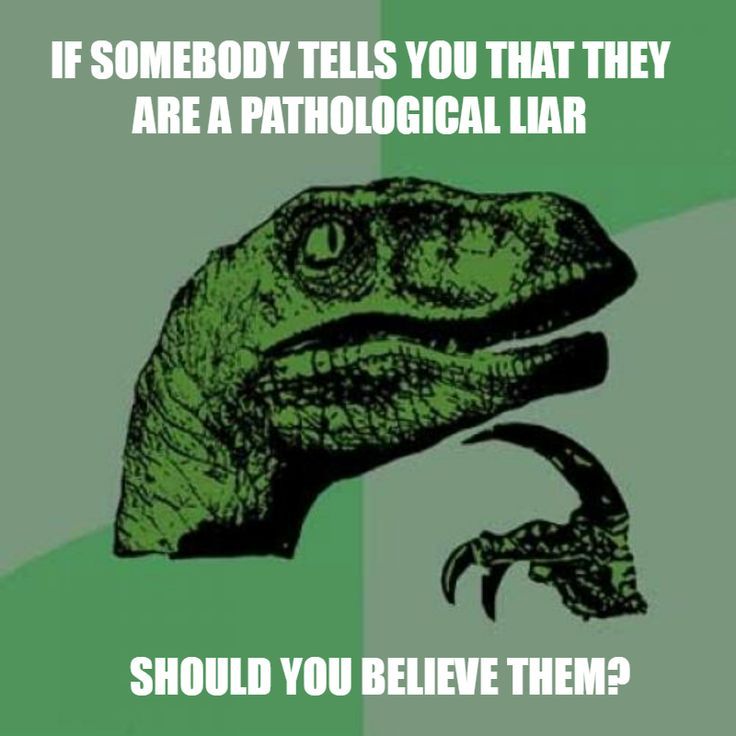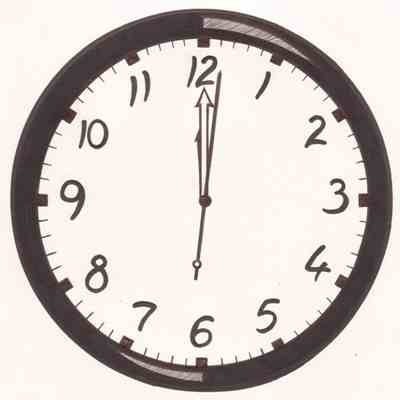Your customers are irrational; here's how your marketing should catch up (according to science)

Until recently, in terms of the history of science, it’s been assumed that people most of the time act rationally when making decisions. Especially, if these decisions involve spending hard-earned money. It was believed by both economists and your neighbours (if they had ever been asked) that people make decisions based on their attitudes, that they reason their actions, that the rules of the market are based solemnly on supply and demand.
It took revolutionary researchers, including Kahneman (a psychologist that received a Nobel prize in Economy), Tversky, Langer and so many others in the fields of social and consumer psychology for economists, marketers, and laypeople to start questioning this view. After thousands of experiments, scientific papers read only by the author’s parents and best-selling average-reader-friendly books, the scientific society has come to a troubling conclusion: people are irrational; and what’s even stranger - people are calculatably, predictably irrational.

It’s not that they just move in completely random directions, but it’s also not that they move in the direction best for them. Rather, there’s a number of factors unknown to the person making a decision that determines how the decision is made. So, to give you an idea, if you’re buying a house or agreeing to donate your organs after you die, there are factors influencing your decision that have absolutely nothing to do with the quality of the house or your attitude to organ donation. How can that be? I mean, surely, you’re probably aware that your habit of grabbing a Snickers on a way out of a shop doesn’t involve much thinking, but something that big? Which sorts of factors could be that influential?
This is what this post, and many posts after that one, will be about. We’ll go through each factor that determines the way you behave, how these factors interact to form your thoughts, why you buy what you buy, how come so many of your decisions, as well as decisions of your customers, bosses, and investors are easily manipulated.
And as it’s usually done, we’ll start relatively small: the topic of this post is framing. While framing can be described in a myriad of abstractive, complicated ways (here’s a definition from Wikipedia), we’ll use it as an umbrella term for how the request (problem, question, etc.) is formulated.
1. The illusion of justification
In one of the pioneering studies by Ellen Langer from Harvard University that proposed that humans just might be acting in an automatic manner most of the time, she had participants of the study request to break in on a line of random people waiting to use a busy copy machine (it’s 1978, this was a thing back then). The participants used three different requests to break in line:
“Excuse me, I have 5 pages. May I use the xerox machine?”
“Excuse me, I have 5 pages. May I use the xerox machine, because I have to make copies?”
“Excuse me, I have 5 pages. May I use the xerox machine, because I’m in a rush?”
Take a minute to try and predict the percentage of people agreeing to each request.

Here’re the results:
“Excuse me, I have 5 pages. May I use the xerox machine?” [60% compliance]
“Excuse me, I have 5 pages. May I use the xerox machine, because I have to make copies?”[93% compliance]
“Excuse me, I have 5 pages. May I use the xerox machine, because I’m in a rush?” [94% compliance]
The difference between the real reasoning and the completely pointless one is completely insignificant, while the difference between a simple request and a “justified” one is visible and large. People seem to have paid attention to the form of the request rather than the meaning of it. They complied automatically, without giving it a thought, as if triggered by the familiar structure.
Similar results were confirmed for the written requests, proving our automatic response to the meaningless but properly structured information isn’t limited to oral communication. However, when the researcher changed the request from asking to print out 5 copies to asking for 20 copies, the results decreased significantly. Why? People stopped to think - the spell was broken.
So what happened? Why didn’t our minds process the obviously irrelevant information and treated it as a placebic one instead? Researchers proposed that such mindlessness might be the most common mode of social interaction. The assumption is that people make decisions based on their past experience. All you need is a minimal amount of structural information - this information may not even be the most useful part of the information available - and you will act the way you did in the past and according to the social script, which in this case is “comply if the justification is provided”.
Marketing takeaway: provide justification for your requests (such as reviews, testimonials, re-ordering, etc.) as long as the requests are not too large. Can’t provide a real one? Come up with anything vague. E.g., “Re-order new contact lenses because you might need more!”
2. The confirmation bias
In 2003, Johnson and Goldstein analyzed the organ donation rates across Europe. They noted that the rate of organ donation was close to 100% in Austria but only 12% in Germany, 86% in Sweden but only 4% in Denmark. How could that be? These are countries with similar cultural and religious background. What is it then: national policy? Heavy advertising? Crying parents on television calling for empathy?
The truth is much simpler. The high-donation countries have an opt-out form, where individuals who wish not to donate must check a box. Unless they take this simple action, they are considered willing donors. The low-contribution countries have an opt-in form: you must check a box to become a donor. That’s it - the best single predictor of whether or not people will donate their organs is which box is a default option.
Now you might assume that it’s something to do with how difficult the process is: perhaps, as with some Internet browsers and mobile networks, you have to scroll through dozens of pages and spend fifteen minutes looking for the box. It’s not - the box is right there, in both cases. It’s definitely impossible to miss it. What’s going on then? We’re not talking about extra five minutes in a line anymore (although, I’d say that’s still a large sacrifice) - we’re talking about a difficult, controversial decision with religious and cultural implications that involves saving lives and possibly offending your loved ones.
What’s going on is a confirmation bias. Our brains work differently depending on whether the question is asked in a negative or positive frame. If you’re asked “Is Sam friendly?”, you will recall different instances of Sam’s behavior than you would if you had been asked “Is Sam unfriendly?”. Based on associations that you’ve recalled automatically, you’ll have different results of your newly assessed attitude to Sam, and you will provide a different answer to the question. It may not be 100% different, but it will be significantly different.
Note that there’s also a different side to confirmation bias: people seek data that are likely to be compatible with the beliefs they currently hold and do their best to ignore the data that refute their beliefs. So in fact, if the attitude of the majority to organ donation were strongly positive or strongly negative, framing wouldn’t affect their final decision. After a stumble in their decision-making process, people would tick/untick the box according to the beliefs they’ve always had. However, such observation tells us that the absolute majority have no strongly held opinion on organ donation, and as a result framing does their decision-making for them.
Marketing takeaway: a) Introduce a default option - one that you’d want your customers to follow. This could be email subscription, re-ordering, etc. Absolutely no need to make it tricky, though. b) When forming a question/request, do it with the wording that could be the basis of their answer. E.g., “Has our customer service been helpful?”.
3. Framing effects
The phenomenon called “The framing effect”, which is closely associated and intertwined with everything that’s been talked about up until now, is divided by modern researchers into categories based on its effect on your thinking and decision-making.
Risky choice framing
The first one has to do with risk-taking. Here’s a task for you:
Imagine that the United States is preparing for an outbreak of an unusual Asian disease that is expected to kill 600 people. Two alternative programs to combat the disease have been proposed. Scientific estimates of the consequences of the programs are as follows: If Program A is adopted, exactly 200 people will be saved. If Program B is adopted, there is a 1 in 3 probability that all 600 people will be saved and a 2 in 3 probability that no people will be saved.
Which option would you choose?

Tversky and Kahneman found that the majority would choose program A - a certain option of saving one-third lives.

Now consider this: Program C is adopted, exactly 400 people will die. If Program D is adopted, there is a 1 in 3 probability that nobody will die and a 2 in 3 probability that all 600 will die.
Which one would you choose?

Tversky and Kahneman found a “choice reversal”: the majority of subjects who were given the negatively framed version (Program C vs Program D) selected the risky option. Program A was chosen by 72% of participants when it was presented with positive framing ("saves 200 lives") dropping to only 22% (Program C) when the same choice was presented with negative framing ("400 people will die").
So what we have is: people are more likely to take risks when options focus attention on the chance to avoid losses than when options focus on the chance to realize gains. It’s an automatic decision: when participants are asked to provide a rationale for their choice, the framing effect is reduced or eliminated.
Marketing takeaway: if you’re in business that involves regular risk-taking (e.g., healthcare) and you want your customers to make informed, unbiased decisions, present the choice in a way that’s not affected by risky framing or draw customers’ attention to it.
Attribution framing
This one has to do with your evaluation of anything (recall the confirmation bias: this can be an evaluation of your colleague Sam, a product, a quality of the performed surgery, etc.). Regardless of the subject, your evaluation depends on a positive or negative frame. Levin and Gaeth showed that perceptions of the quality of ground beef depend on whether the beef is labeled as “75% lean” or “25% fat.” They found that a sample of ground beef was rated as better tasting and less greasy when it was labeled in a positive light (75% lean) rather than in a negative light (25% fat). People didn’t just buy the one presented in a positive light, they enjoyed it better. Isn’t that amazing?
It’s the same in other fields: the statement that “the odds of survival one month after surgery are 90%” is more reassuring than the equivalent statement that “mortality within one month of surgery is 10%.” Researchers demonstrated that height estimates are influenced by whether subjects consider how short versus how tall a person is, and that subjects report more headaches if asked whether they have headaches frequently rather than being asked if they have them occasionally.
Attribution framing has some exciting effects on memory. In a study by Loftus and Palmer, 7 films of traffic accidents were shown to different groups of people. After watching the film, participants were asked to describe what had happened as if they were eyewitnesses. They were then asked specific questions, including the question about how fast the cars were going when they (smashed / collided / bumped / hit / contacted) each other. The effect of the verb used on the estimated speed was right there: the participants in the “smashed” condition reported the highest speed estimate (40.8 mph), followed by “collided” (39.3 mph), “bumped” (38.1 mph), “hit” (34 mph), and “contacted” (31.8 mph) in descending order.
In their second experiment, participants who were asked how fast the cars were going when they smashed were more likely to report seeing broken glass than if the cars hit. There was no broken glass in the original video.
Marketing takeaway: a) Whenever you get a chance, involve numbers in your marketing and present them in a positive frame. b) Stop to think about wording when you’re asking/telling something important. Are you a journalist rooting for freedom of speech in absolutely all cases? Ask whether it’s right to forbid public condemnation of democracy, not whether it’s right to allow public condemnation of democracy.
Goal framing effect
This affects the relationship between behaviors and goal attainment. For example, mammography can be presented as a gain from action (“If you get a mammogram, you take advantage of the best method for early detection of breast cancer”) or a loss from inaction (“If you don’t get a mammogram, you fail to take advantage of the best method for early detection of breast cancer”). In case of goal framing effect, people are much more likely to take action if it’s presented in a negative form, i.e. they are told what will happen if the action is not taken.
For example, 93% of PhD students registered early when a penalty fee for late registration was emphasized, and only 67% did so when this was presented as a discount for earlier registration (study).
Losses have more motivating power than gains, and goal framing effect comes from deeply-rooted loss aversion, which will be extensively discussed later on this blog.
Marketing takeaway: If your aim is to get people to do something, don’t frame it in a way of what they’ll gain from it, frame it in a way that makes it clear what they’ll lose if they don’t do it.
Conclusion
The existence of framing effects has been documented in medical decisions (decisions made by both the provider and the recipient of health care), perceptual judgments, consumer choices, responses to social dilemmas, bargaining behaviors, auditing evaluations, and many other decisions. They influence decisions of doctors, judges, and even researchers themselves. It’s a sort of mental shortcut that you can’t overcome forever. However, next time, if you’re making an important decision, stop to reflect about framing effects. Imagine yourself a statistician and calculate the opposite of what’s presented.
- Does the 10% of something bad is really that bad when you remember that there’s 90% of the good stuff?
- Are you reacting to a request just because it’s presented to trigger your loss aversion?
- Are you making a risk that you can’t afford because the problem is negatively framed? What if you switch the wording yourself?
I know this sounds like something obvious and almost condescending, but according to research, only such step-by-step reflection will save you from being affected by framing.
Hope this was useful and interesting. In case you have any questions, please leave a comment below, and I’ll gather all the available research to answer it. The next post will be on how your decision on spending can be affected by any number - even your phone number. Stay tuned!













